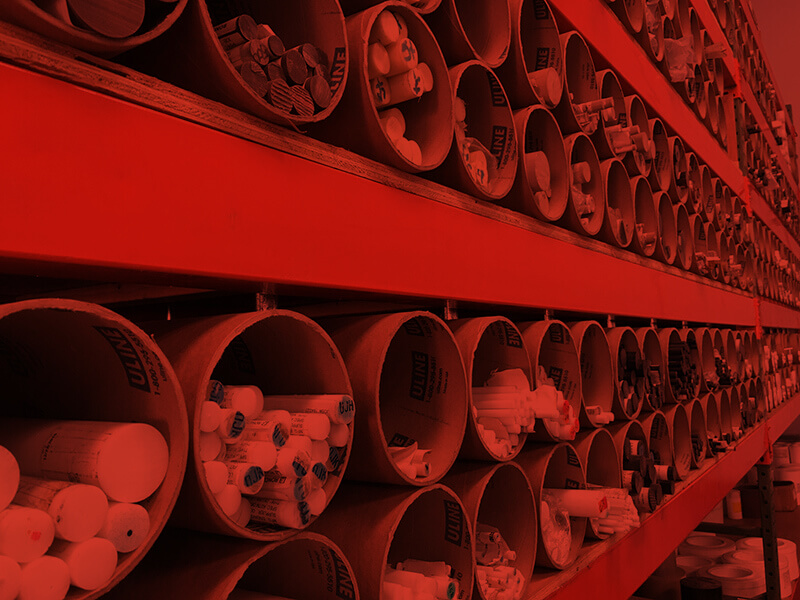Polyolefins (LDPE, HDPE, UHMW, PP)
Polyolefin materials include Polyethylene and Polypropylene. Both types of material exhibit excellent chemical resistance, toughness, and are lightweight. Most formulations can be readily welded, machined, or formed. Polypropylene has better strength and stiffness, while Polyethylene has better wear and abrasion resistance. Polyethylene also has a very low coefficient of friction.
Polyolefins can be produced by utilizing Injection Molding, Extrusion, or Compression Molding (UHMW) methods. The materials can also be compounded with numerous fillers to enhance their physical properties.
What are the Benefits of Polyolefins?
- Excellent Chemical resistance (Inert)
- Very good Impact resistance
- Abrasion resistance
- Very Low Moisture Absorption
- Light weight
- Excellent sliding properties
What are the Typical Applications of Polyolefins?
Table Tops Hoods
Cabinets Slide Pads
Bushings Cases
Star Wheels Tanks
Rollers Deflectors
Sprockets Spacers
Valve Seats Insulators
Scrapers Liners
Common Formulations of Polyolefins:
Low-Density Polyethylene – Flexibility, toughness, formability
High-Density Polyethylene- Increased strength, rigidity, abrasion resistance
Polypropylene – Homopolymer good strength, stiffness, weldable
Polypropylene – Copolymer, good strength, stiffness, weldable
UHMW – Ultra High Molecular Weight Polyethylene, good wear, abrasion, and impact
Tivar® 88 – UHMW with Glass Bead filler
Tivar® HOT – Heat Stabilized UHMW
Tivar® ESD – Electrostatic Dissipative UHMW with Lower Surface Resistivity
Tivar® Clean Stat ™ – Electrostatic Dissipative UHMW with Higher Surface Resistivity

CERTIFICATIONS
TERMS & CONDITIONS
NAVIGATION
RONCELLI NEWS
RONCELLI MEDICAL
